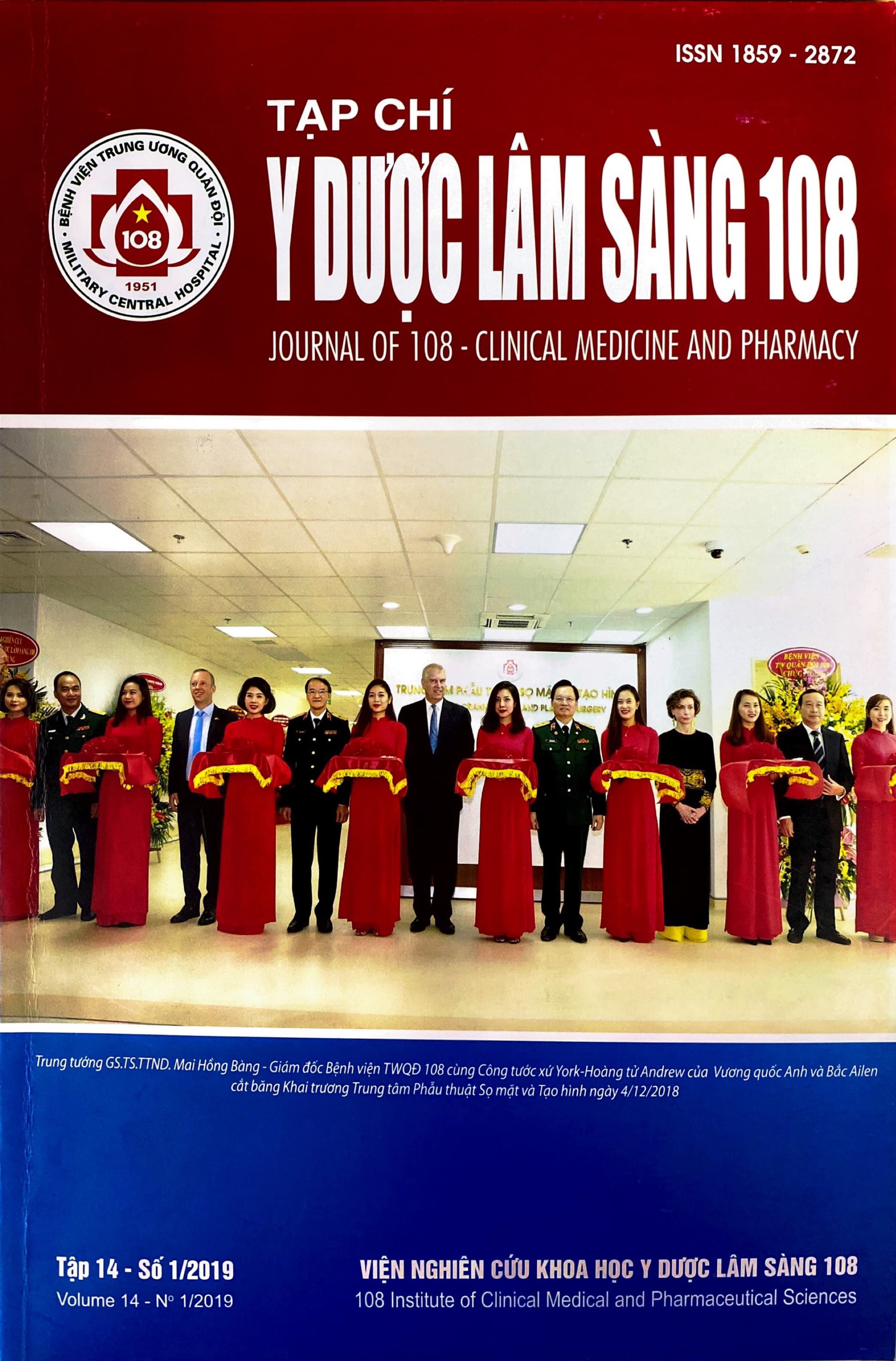Investigate causative bacteria and characteristics of antibiotic resistance in septic patients caused by cholangitis at the 108 Military Central Hospital
Main Article Content
Keywords
Abstract
Objective: To determine the pathogenic bacteria from blood samples of septic patients caused by cholangitis and to evaluate their antibiotic resistance. Subject and method: A retrospective and descriptive study was conducted which enrolled 95 septic patients caused by cholangitis at the 108 Military Central Hospital in the period from March 2015 to November 2018. Result: Only gram negative bacteria were identified by blood culture. The predominant pathogentic bacteria were E. coli, K. pneumoniae, P. aeruginosa with the frequency of 64.2%, 13.7%, 6.3%, respectively. High frequency of antibiotic resistance with the third or fourth generation cephalosporin was significantly recorded by the rate from 60% to 70%. The bacterial isolates were highly resistant with fluoroquinolone antibiotics group, such as ciprofloxacin with the rate of 45.5%. Meanwhile, 66.7% and 92.4% bacterial species were susceptive with amikacin and gentamicin, respectively. Specially, all E.coli isolates were susceptive with amikacin. Carbapenems are a class of the highest effective antibiotic agents to all gram negative bacterial strains isolated from blood samples with the susceptibility from 92.4% to 98.4%. Other antibiotics were still had highly susceptive like piperacillin/tazobactam, colistin. Conclusion: The present study showed that the most of E. coli, K. pneumoniae, P. aeruginosa were found from the blood samples of septic patients caused by cholangitis. The bacterial isolates were highly susceptible to amikacin, carbapenem, piperacillin/tazobactam and colistin.
Article Details
References
2. Andrew Rhodes et al (2017) Surviving sepsis campaign: International guidelines for management of sepsis and septic shock: 2016. Intensive Care Medicine 43(3): 304-377.
3. Ban Seok Lee et al (2013) Risk factors of organ failure in patients with bacteremic cholangitis. Digestive Diseases and Sciences 58(4): 1091-1099.
4. Harumi Gomi et al (2018) Toyko guidelines 2018: Antimicrobial therapy for acute cholangitis and cholecystitis. J Hepatobiliary Pancreat Sci 25: 3-16.
5. Karvellas CJ, Abraldes JG et al (2016) Cooperative antimicrobial therapy of septic shock (CATSS) database research group. The impact of delayed biliary decompression and anti-microbial therapy in 260 patients. Aliment Pharmacol Ther 44(7): 755-766.
6. Li YS et al (2016) The clinical epidemiology and antibiotic resistance patterns of biliary tract infections caused by antimicrobial-resistant Escherichia coli. Journal of Infectious Diseases and Treatment 2(1): 11.
7. Michael J Englesbe et al (2005) Resistant pathogens in biliary obstruction: Importance of cultures to guide antibiotic therapy. HPB (Oxford) 7(2): 144-148.
8. Salvador VBD, Lozada MCH, Consunji RJ (2011) Microbiology and antibiotic susceptibility of organisms in bile cultures from patients with and without cholangitis at an Asian academic medical center. Surg Infect (Larchmt) 12(2): 105-111.
9. Seiki Kiriyama et al (2018) Tokyo Guidelines 2018: diagnostic criteria and severity grading of acute cholangitis. Japanese Society of Hepato Biliary 25(1): 17-30.
 ISSN: 1859 - 2872
ISSN: 1859 - 2872
